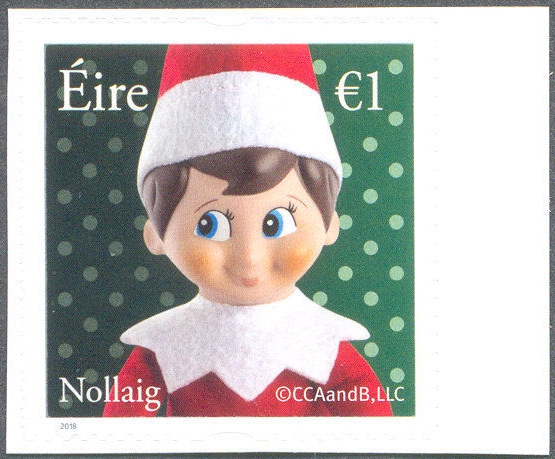
An elf (elves in the plural) is a type of human-shaped supernatural being in Germanic mythology and folklore. In medieval Germanic-speaking cultures, elves seem generally to have been thought of as beings with magical powers and supernatural beauty, ambivalent towards everyday people and capable of either helping or hindering them. However, the details of these beliefs have varied considerably over time and space, and have flourished in both pre-Christian and Christian cultures. In American, Canadian, Irish, and British cultures, a Christmas elf is a diminutive elf that lives with Santa Claus at the North Pole and acts as his helper. Christmas elves are often depicted as green or red clad with large, pointy ears and pointy hats. Santa’s elves are often said to make the toys in Santa’s workshop and take care of his reindeer, among other tasks.
The word elf is found throughout the Germanic languages and seems originally to have meant ‘white being’. The English word elf is from the Old English word most often attested as ælf (whose plural would have been *ælfe). Although this word took a variety of forms in different Old English dialects, these converged on the form elf during the Middle English period. During the Old English period, separate forms were used for female elves (such as ælfen, putatively from common Germanic ɑlβinnjō), but during the Middle English period the word elf came routinely to include female beings.
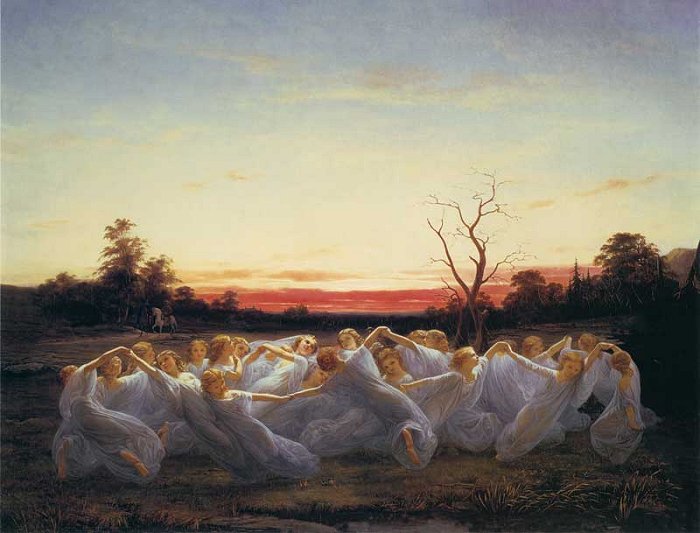
Reconstructing the early concept of an elf depends largely on texts, written by Christians, in Old and Middle English, medieval German, and Old Norse. These associate elves variously with the gods of Norse mythology, with causing illness, with magic, and with beauty and seduction. After the medieval period, the word elf tended to become less common throughout the Germanic languages, losing out to alternative native terms like zwerc (“dwarf”) in German and huldra (“hidden being”) in Scandinavian languages, and to loan-words like fairy (borrowed from French into most of the Germanic languages). Still, beliefs in elves persisted in the early modern period, particularly in Scotland and Scandinavia, where elves were thought of as magically powerful people living, usually invisibly, alongside everyday human communities. They continued to be associated with causing illness and with sexual threats. For example, a number of early modern ballads in the British Isles and Scandinavia, originating in the medieval period, describe elves attempting to seduce or abduct human characters.
With urbanization and industrialization in the nineteenth and twentieth centuries, beliefs in elves declined rapidly (though Iceland has some claim to continued popular belief in elves). However, from the early modern period onwards, elves started to be prominent in the literature and art of educated elites. These literary elves were imagined as small, impish beings, with William Shakespeare’s A Midsummer Night’s Dream being a key development of this idea. In the eighteenth century, German Romanticist writers were influenced by this notion of the elf, and reimported the English word elf into the German language.
From this Romanticist elite culture came the elves of popular culture that emerged in the nineteenth and twentieth centuries. The “Christmas elves” of contemporary popular culture are a relatively recent tradition. As American Christmas traditions crystallized in the nineteenth century, Clement Moor’s 1823 poem “A Visit from St. Nicholas” (widely known as “‘Twas the Night before Christmas”) characterized St Nicholas himself as “a right jolly old elf”. However, it was his little helpers, inspired partly by folktales like The Elves and the Shoemaker, who became known as “Santa’s elves”; the processes through which this came about are not well understood, but one key figure was a Christmas-related publication by the German-American cartoonist Thomas Nast.
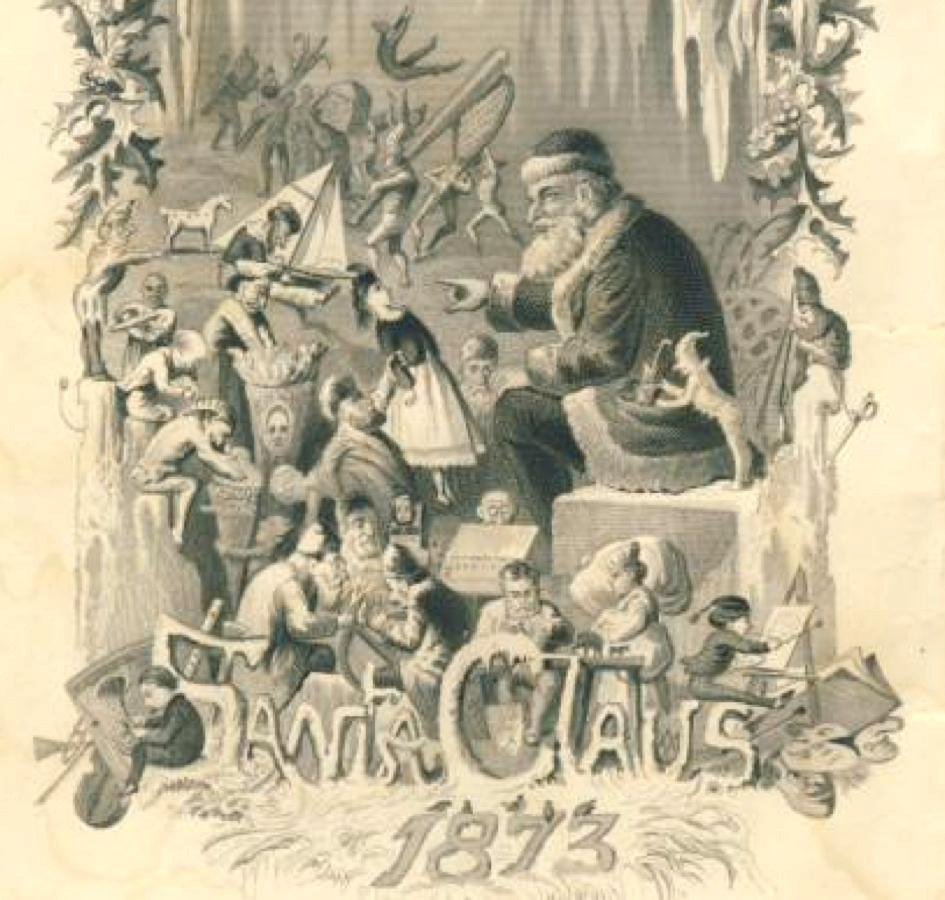
The Christmas elf appeared in literature as early as 1850 when Louisa May Alcott completed, but never published a book entitled Christmas Elves. The image of the elves in the workshop was popularized by Godey’s Lady’s Book, with a front cover illustration for its 1873 Christmas Issue showing Santa surrounded by toys and elves with the caption, “Here we have an idea of the preparations that are made to supply the young folks with toys at Christmas time.” During this time Godey’s was immensely influential to the birth of Christmas traditions, having shown the first widely circulated picture of a modern Christmas tree on the front cover of its 1850 Christmas issue. Additional recognition was given in Austin Thompson’s 1876 work “The House of Santa Claus, a Christmas Fairy Show for Sunday Schools”.
Prior to the influence of St. Nicholas in Sweden, the job of giving out gifts was done by the Yule Goat. By 1891, the saint had become so well known that he could no longer be ignored. He became merged with Tomten, which was previously an elfish/dwarfish farm guardian. Following the work of artist Jenny Nyström, this hybrid figure became known as Jultomten.
In the United States, Canada, and Britain, the modern children’s folklore of Santa Claus typically includes diminutive elves at Christmas; green-clad elves with pointy ears and pointy hats as Santa’s assistants or hired workers. They make the toys in a workshop located in the North Pole. In recent years, other toys — usually high-tech toys like computers, video games, DVDs and DVD players, and even mobile phones — have also been depicted as being ready for delivery, but not necessarily made, in the workshop as well. In this portrayal, elves slightly resemble nimble and delicate versions of the dwarves of Norse myth. The role of elves as Santa’s helpers has continued to be popular, as evidenced by the success of the popular Christmas movie Elf.

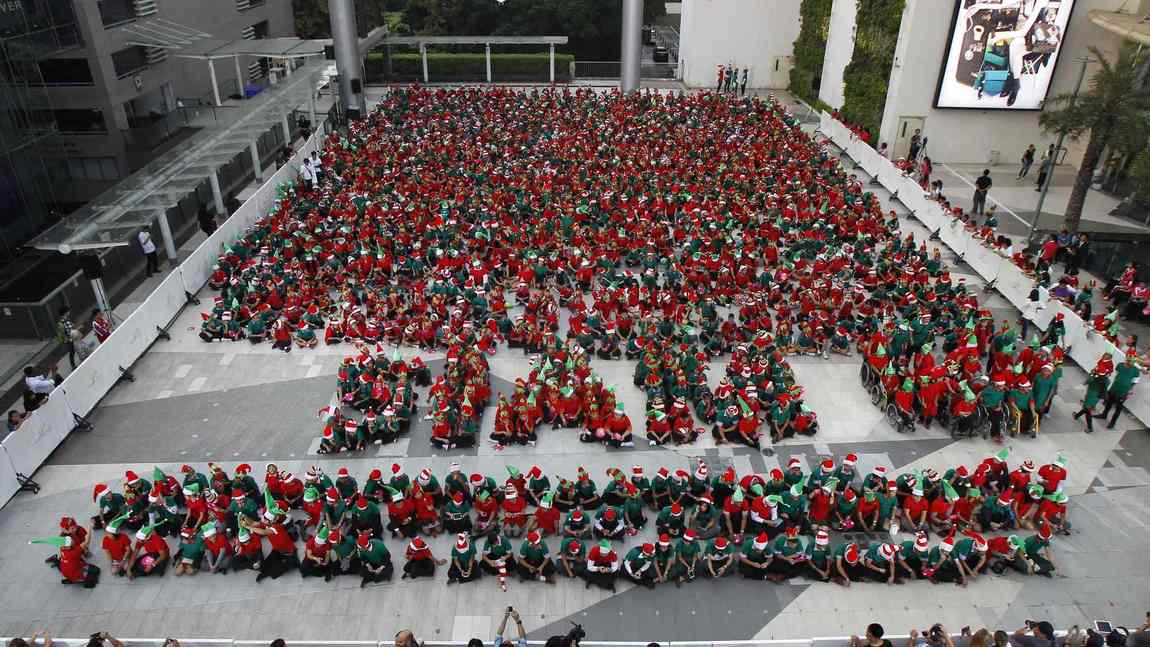 Surprisingly, it is my current (for the past 14 years) home country of Thailand that holds the world’s record for the largest gathering of Christmas elves. This occurred on November 25, 2014, when 1,792 of Santa’s little helpers, aged between nine and 15, donned red, green and white hats, matching T-shirts and pointy plastic elf ears, as they formed up outside a shopping mall in Bangkok. They held their position for five minutes before being declared Guinness World Records winners. Fourteen children were disqualified for not putting on their elf ears. The previous record was 1,110 Santa’s elves, set in 2013 in Wetherby in Britain. Although Thailand is a predominantly Buddhist country, the commercial aspect of the Christian holiday is widely exploited, with shops and hotels decorating during the festive season.
Surprisingly, it is my current (for the past 14 years) home country of Thailand that holds the world’s record for the largest gathering of Christmas elves. This occurred on November 25, 2014, when 1,792 of Santa’s little helpers, aged between nine and 15, donned red, green and white hats, matching T-shirts and pointy plastic elf ears, as they formed up outside a shopping mall in Bangkok. They held their position for five minutes before being declared Guinness World Records winners. Fourteen children were disqualified for not putting on their elf ears. The previous record was 1,110 Santa’s elves, set in 2013 in Wetherby in Britain. Although Thailand is a predominantly Buddhist country, the commercial aspect of the Christian holiday is widely exploited, with shops and hotels decorating during the festive season.
The Elf on the Shelf stamp was the first of the 2018 Irish Christmas stamps that I saw, sent to me by a former co-worker who had moved back to Dublin. It was one of eight self-adhesive holiday stamps released by An Post on November 1, 2018, all printed by Cartor Security Printing using offset lithography and perforated 13¼ x 14. One stamp is denominated at 0.50 euros while the other seven have a face value of 1 euro. The Elf on the Shelf stamp is the only one that is shaped as a square and was issued in sheetlets of six stamps each in a quantity of 150,000. An Post sold these stamps in a pack that included six Elf on the Shelf postcards.
 I’d never heard of The Elf on the Shelf: A Christmas Tradition before I began researching this article. This is a 2005 children’s picture book, written by Carol Aebersold and her daughter Chanda Bell, and illustrated by Coë Steinwart. The book tells a Christmas-themed story, written in rhyme, that explains how Santa Claus knows who is naughty and nice. It describes elves visiting children from Thanksgiving to Christmas Eve, after which they return to the North Pole until the next holiday season. The Elf on the Shelf comes in a keepsake box that features a hardbound picture book and a small scout elf. The authors say the story is based on a family tradition started by Carol Aebersold for her twin daughters, Chanda Bell and Christa Pitts in Georgia.
I’d never heard of The Elf on the Shelf: A Christmas Tradition before I began researching this article. This is a 2005 children’s picture book, written by Carol Aebersold and her daughter Chanda Bell, and illustrated by Coë Steinwart. The book tells a Christmas-themed story, written in rhyme, that explains how Santa Claus knows who is naughty and nice. It describes elves visiting children from Thanksgiving to Christmas Eve, after which they return to the North Pole until the next holiday season. The Elf on the Shelf comes in a keepsake box that features a hardbound picture book and a small scout elf. The authors say the story is based on a family tradition started by Carol Aebersold for her twin daughters, Chanda Bell and Christa Pitts in Georgia.
This story describes how Santa’s “scout elves” hide in people’s homes to watch over events. Once everyone goes to bed, the scout elf flies back to the North Pole to report to Santa the activities, good and bad, that have taken place throughout the day. Before the family wakes up each morning, the scout elf flies back from the North Pole and hides. By hiding in a new spot each morning around the house, the scout elf plays an ongoing game of hide and seek with the family. The Elf on the Shelf explains that scout elves get their magic by being named and being loved by a child. In the back of each book, families have an opportunity to write their elf’s name and the date that they adopted it. Once the elf is named, the scout elf receives its special Christmas magic, which allows it to fly to and from the North Pole.
 The book tells how the magic might disappear if the scout elf is touched, so the rule for The Elf on the Shelf states, “There’s only one rule that you have to follow, so I will come back and be here tomorrow: Please do not touch me. My magic might go, and Santa won’t hear all I’ve seen or I know.” Although families are told not to touch their scout elf, they can speak to it and tell it all their Christmas wishes so that it can report back to Santa accurately.
The book tells how the magic might disappear if the scout elf is touched, so the rule for The Elf on the Shelf states, “There’s only one rule that you have to follow, so I will come back and be here tomorrow: Please do not touch me. My magic might go, and Santa won’t hear all I’ve seen or I know.” Although families are told not to touch their scout elf, they can speak to it and tell it all their Christmas wishes so that it can report back to Santa accurately.
The story ends on Christmas Day with the elf leaving to stay with Santa for the rest of the year until the following Christmas season.
The Elf on the Shelf was written in 2004 by Carol Aebersold and daughter Chanda Bell over a cup of tea. Bell suggested they write a book about an old tradition of an elf sent from Santa who came to watch over them at Christmas time. Aebersold’s other daughter, Christa Pitts, was recruited by the family to share her expertise in sales and marketing. Together, the trio devoted the next three years promoting their self-published book and attending book signings and trade shows.
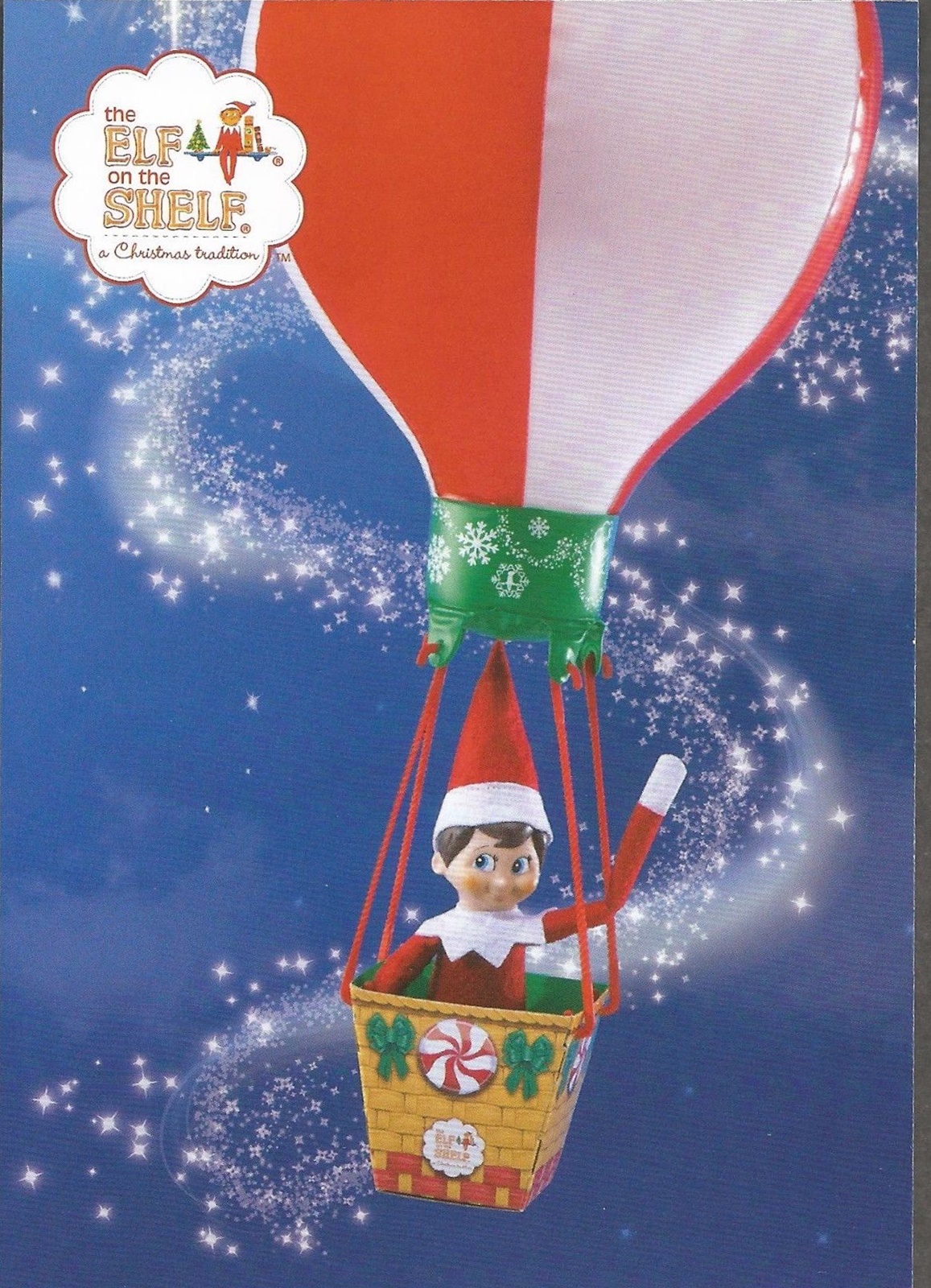
The Elf on the Shelf won the Best Toy Award by Learning Express, won Book of the Year Award from Creative Child Awards and National Best Books Award sponsored by USA Book News in 2008. In 2012, The Elf on the Shelf made its first appearance in the Macy’s Thanksgiving Day Parade alongside fellow parade newcomers Hello Kitty and Papa Smurf. In 2013, the book hit the No. 1 spot on the USA Today Bestsellers List.
On November 26, 2011, the book aired on CBS as a 30-minute animated TV show, An Elf’s Story: The Elf on the Shelf, directed by Chad Eikhoff. The Washington Post criticized the quality of the animation and dismissed it as “just a half-hour advertisement for a book and a toy”, which it felt would not join “the canon of prime-time animated Christmas specials that actually move the spirit”. Common Sense Media disagreed, calling the special “a great addition to families’ holiday TV traditions”; however, they also warn parents about the consumer-driven nature of the story, and make note of its lack of educational value.
In October 2013, The Elf on the Shelf: A Birthday Tradition was released. Written and illustrated by the same team that created the first book, it offers instructions for inviting a scout elf to visit for a child’s birthday party and describes how the elf decorates a chair for the child. In April 2014, two supplemental birthday products were released: The Elf on the Shelf Birthday Countdown Game and The Elf on the Shelf Birthday Chair Decoration Kit.
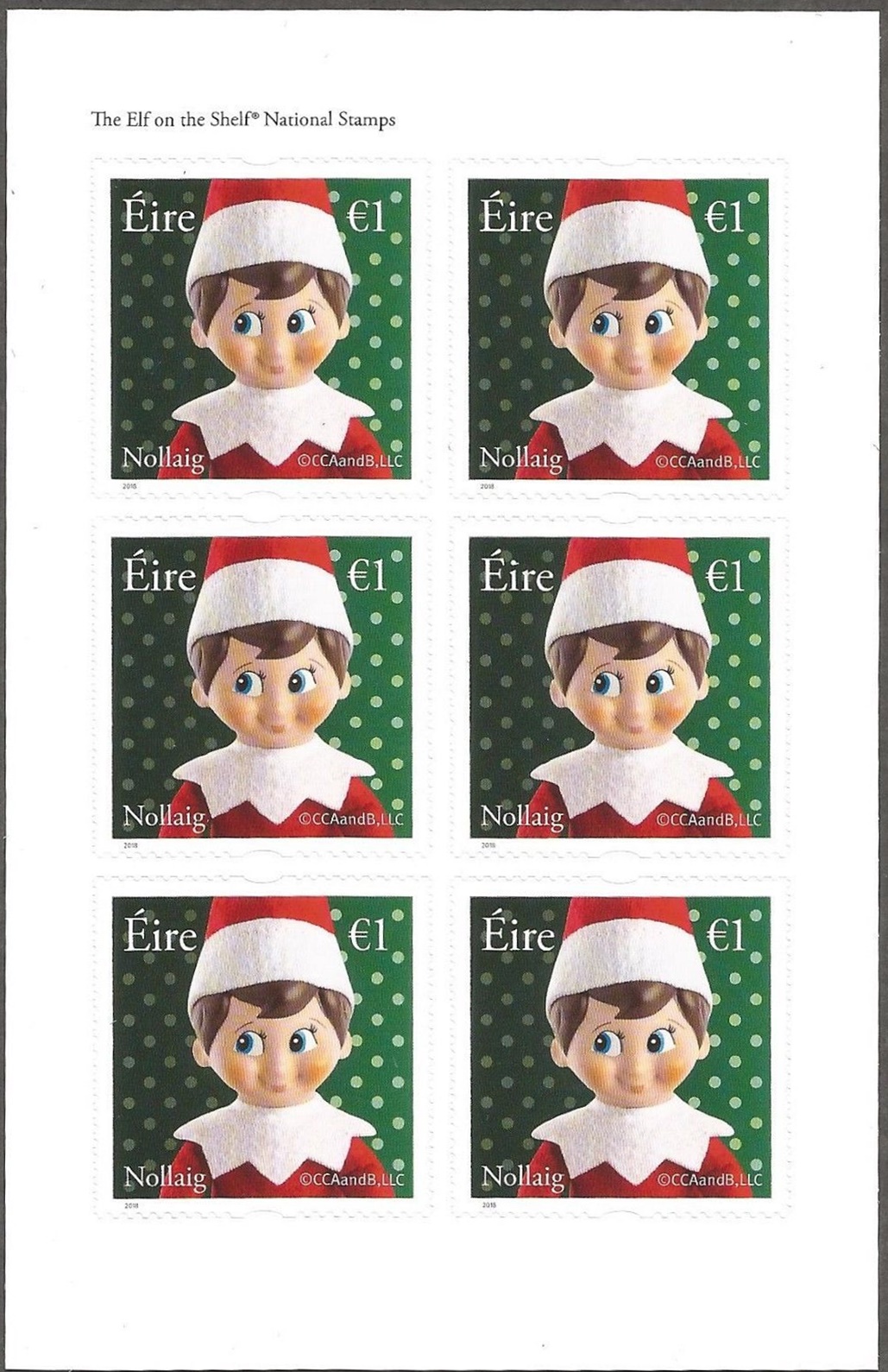
The Elf on the Shelf was parodied as “The Gnome in the Home” in “The Nightmare After Krustmas”, a 2016 episode of The Simpsons.
The Elf has received some criticism from cultural reviewers. The Atlantic columnist Kate Tuttle calls it “a marketing juggernaut dressed up as a tradition” whose purpose is “to spy on kids” and that one shouldn’t “bully your child into thinking that good behavior equals gifts.” Washington Post reviewer Hank Stuever characterized the concept as “just another nannycam in a nanny state obsessed with penal codes”. Writing for Psychology Today, Dr. David Kyle Johnston calls it a “dangerous parental crutch”, with much the same reasoning as what he terms the “Santa lie”. Professor Laura Pinto suggests that it conditions kids to accept the surveillance state and that it communicates to children that “it’s okay for other people to spy on you, and you’re not entitled to privacy.” She argues that “if you grow up thinking it’s cool for the elves to watch me and report back to Santa, well, then it’s cool for the NSA to watch me and report back to the government … The rule of play is that kids get to interact with a doll or video game or what have you, but not so with the Elf on the Shelf: The rule is that you don’t touch the elf. Think about the message that sends.”






Good read!
LikeLike